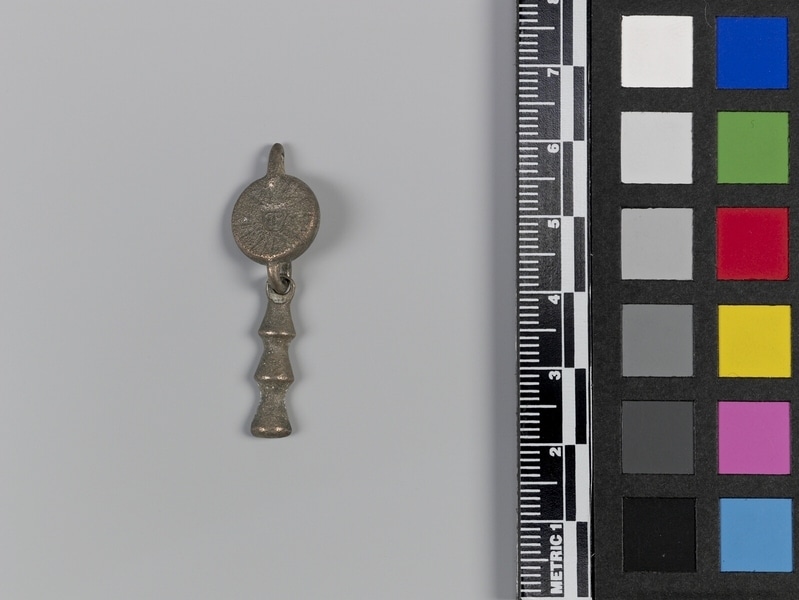Earrings Item Number: 1590/239 a-b from the MOA: University of British Columbia

Description
Pair of earrings (only one shown). Each composed of a disc with a stylized tree form hanging from it. Small loop but no hook.
History Of Use
Silver ornaments represent an important part of early exchange between Europeans, including fur traders, and First Nations peoples, especially in eastern and central Canada and the U.S.A. Initially, the main source of silver was British, French and Spanish coins. Most ornaments were produced by silversmiths of European origin in North America and Europe, and were actively traded only from 1760 to 1821. By the mid-18th century silver objects were produced in New England, Quebec and Montreal. Silver was used by First Nations peoples as a sign of rank. Silver ornaments in these styles continue to be produced by native silversmiths in central Canada and the U.S.A.
In 1670 King Charles II of England granted an exclusive fur trading charter to the Hudson’s Bay Company in what was later to become Canada. The company’s mandate was to protect the Crown’s interests and undertake exploration and territorial expansion. Competition for furs was intense, and in 1784 the North West Company was formed by a number of independent trading groups. By 1821 this Company faced bankruptcy and merged with the Hudson’s Bay Company. This latter company still exists today, operating a number of retail stores across Canada, and is known simply as The Bay.
Cultural Context
trade; personal decoration; status
Item History
- Made in Canada ? or USA ? between 1760 and 1821
- Owned by Kathleen E. Reif before September 9, 1993
- Received from Kathleen E. Reif (Donor) on September 9, 1993
What
Who
- Culture
- Eastern Woodlands
- Previous Owner
- Kathleen E. Reif
- Received from
- Kathleen E. Reif (Donor)
Where
- Holding Institution
- MOA: University of British Columbia
- Made in
- Canada ? or USA ?
When
- Creation Date
- between 1760 and 1821
- Ownership Date
- before September 9, 1993
- Acquisition Date
- on September 9, 1993
Other
- Item Classes
- metalwork
- Condition
- good
- Accession Number
- 1590/0239 a-b